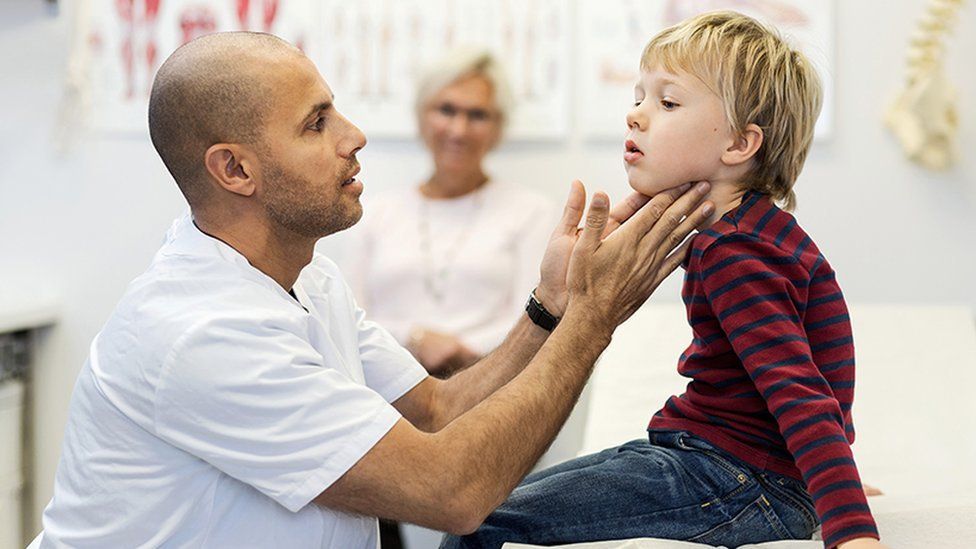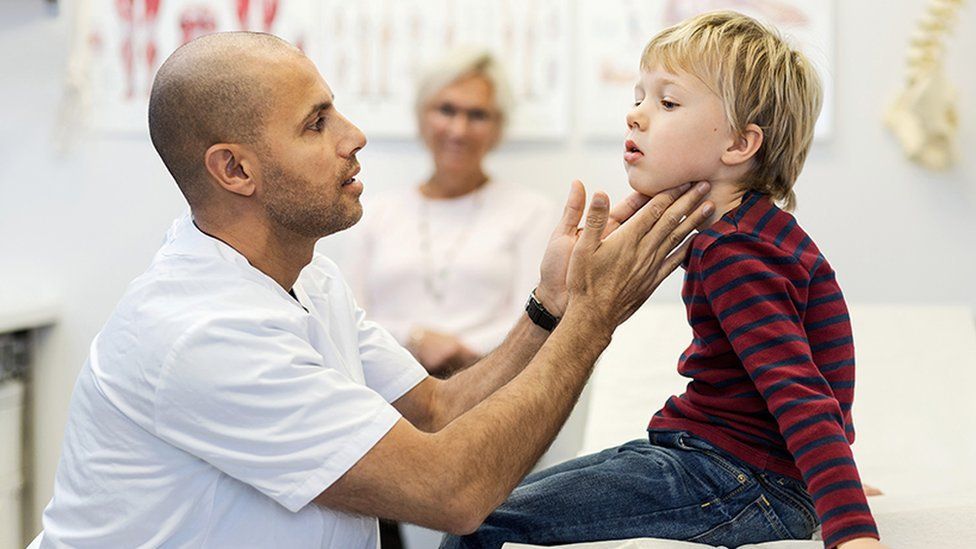Childhood hepatitis: What’s the latest theory?
It looks likely that a common virus which usually causes colds, vomiting and diarrhoea has a role to play. …

By Jim Reed and Philippa Roxby
Health reporters
- Published
- 16 hours ago
 Image source, Getty Images
Image source, Getty ImagesHealth officials are continuing to investigate a sudden surge in cases of hepatitis or liver inflammation among young children.
Even if children catch adenovirus, the chances of developing the liver condition are extremely low, the UK Health Security Agency says.
What is hepatitis?
Hepatitis is the catch-all term to describe inflammation of the liver tissue.
It is often caused by a viral infection – but also by exposure to some chemicals, alcohol, drugs and certain genetic disorders.
How were these cases spotted?
That triggered an investigation by the UK Health Security Agency (UKHSA) which has now looked back at hospital admissions in England, Wales and Northern Ireland since January.
It is now looking into at least 111 cases in children under 10, with the majority children younger than five years old.
They had initial symptoms of vomiting and diarrhoea followed by yellowing of the skin or whites of the eyes, called jaundice.
Of the confirmed cases, 81 live in England, 14 in Scotland, 11 in Wales and 5 in Northern Ireland.
Most have a mild form of the condition, although 10 have needed a liver transplant.
Cases in children have also been detected in numerous other countries around the world – 169 at the latest count.
What could be causing this?
There are lots of different types of adenovirus. One particular adenovirus called F41 was detected in around three-quarters of the children with confirmed hepatitis who were tested.
Health officials believe it’s likely to be making a comeback after virtually disappearing during the first year of the pandemic due to reduced social mixing.
Its impact on young children, who did not come into contact with any of the normal viruses during lockdown when they were infants, could be behind the current surge.
Lab data from the NHS shows that common viruses are now circulating in children, particularly the under-fives, at a higher level than in previous years.
What else has been found?
Around 16% of cases were positive for coronavirus (SARS-CoV-2) when admitted to hospital, but because there was lots of Covid around at the time, health officials say this is not unexpected.
The most common forms of hepatitis – known as A to E – are caused by specific viral infections. However, those viruses have not been detected in these childhood cases.
The wide geographical spread of cases means there is no obvious connection between the children involved which rules out contaminated food, for example.
Dr Meera Chand, director of clinical and emerging infections at UKHSA, said: “Information gathered through our investigations increasingly suggests that this rise in sudden onset hepatitis in children is linked to adenovirus infection.
“However, we are thoroughly investigating other potential causes.”
Could this be something to do with Covid vaccinations?
No – none of the children had been vaccinated.
Covid vaccines are only available from five years old in the UK, meaning many of the children diagnosed with hepatitis would not have been eligible.
What about a Covid infection itself?
UKHSA says it is looking at previous Covid infections in the children affected and as well as the emergence of a new variant of adenovirus, as possible causes.
It says it is continuing to investigate a wide range of other infections and causes.
What should parents look out for?
Parents, GPs and other healthcare workers have been asked to look out for the symptoms of jaundice, a yellow tinge to the skin and other parts of the body, which is most easily seen in the whites of the eyes.
Other symptoms of hepatitis in children include:
- dark urine
- pale, grey-coloured poo
- itchy skin
- muscle and joint pain
- a high temperature
- feeling and being sick
- feeling unusually tired all the time
- loss of appetite
- stomach pain

